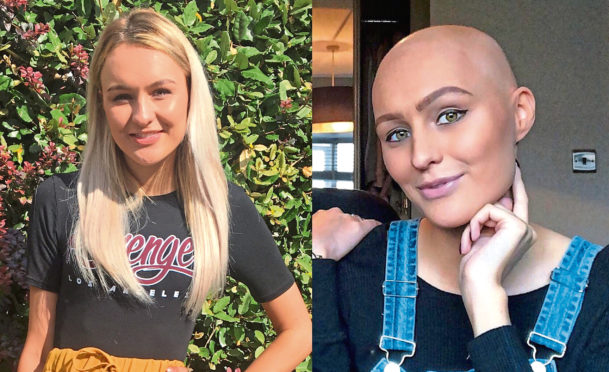
Daisy Ellis hadn’t even heard of sarcoma – until she was diagnosed with it.
This was in August 2017 and Daisy was halfway through a four-year teacher training course at university.
Now, despite being told earlier this year that her cancer was terminal, Daisy hopes to return to uni at some point and perhaps fulfil her ambition to become a primary teacher.
“I’d hoped to carry on at uni as I’d seen some people get treatment in hospital and carry on with their degrees,” says the 23-year-old from Northants.
“But there was absolutely no way. I spent about six months straight in hospital so there was no way I could have carried on.
“I haven’t managed to go back yet.”
Sarcomas are uncommon cancers that can affect any part of the body, on the inside or outside, including the muscle, bone, tendons, blood vessels and fatty tissues.
Around 15 people are diagnosed with sarcoma every day in the UK, which is about 5,300 a year, and there are around 100 different sub-types of sarcoma.
Daisy says: “I’ve got rhabdomyosarcoma which is in the soft tissue but they don’t actually know where it started, which was the first negative because they couldn’t eradicate the primary source.
“Although the pain was first in my back, they think it might have started in my leg, and by the time they caught it, it was everywhere which made it even more complicated.
“It was stage IV when it was diagnosed because it’s very aggressive and very fast-growing.
“I’d only really had symptoms for a month, it got really bad really fast and luckily my GP had seen it once in 30 years and recognised the signs.”
Daisy’s alveolar rhabdomyosarcoma started off rare, and became increasingly odd as it progressed to the point her oncologist described it as “seriously weird”.
“There have been several times when they’ve predicted it should behave in a certain way and it hasn’t, but that’s worked to my advantage because if it behaved as they predicted, I wouldn’t be alive now,” she says.
“Somehow I’m still going.”
From the off, Daisy’s doctors threw everything they could at her cancer including 16 rounds of chemotherapy in her first year alone.
“When I was first diagnosed, they put me on the most brutal drugs to try and do everything they could but they predicted I probably wouldn’t last till Christmas because the treatment had a 50/50 chance of working.
“Some cancers now, when you’re diagnosed they almost guarantee they can tell you what will happen but because this was so rare and there’s so little research, they just said, ‘We don’t know.’
“My prognosis from the start wasn’t good because it is incurable, though it’s treatable – they can keep on top of it with different drugs at the moment.”
Last November was particularly brutal for Daisy as she was given both good news, the chemo seemed to have cleared her spine of cancer, and bad – it had spread to the bone in her leg.
“We don’t know if it was a relapse or whether it was there all along. It was in my leg at the start but they never checked up on it, just assuming the chemo would work there, too.
“In hindsight, I perhaps needed radiotherapy after chemo to get rid of that site because subsequently I did have it and it sorted that tumour. So perhaps if I’d had it earlier I wouldn’t be in this position, but it has popped up in other places since then so I think it always would have spread.
“Where it pops up now, they treat it with radio which for me is mostly pain relief – it’s the only thing that gets the pain under control. It’s purely palliative, it’s not going to cure me.
“That’s been the worst part about this cancer, I have chronic pain all the time, but that’s been beneficial for me because it allows me to know what’s going on and where it is.
“I’ve just started new chemotherapy. I’ve only had one cycle and it’s hard to predict, because it’s the fourth line you kind of expect it not to work. However, because I’ve been different all the way through, maybe it will.
“I’m terminal but there are still options.
“My oncologist has said to me it will kill me eventually but I don’t know whether to believe that because, statistically, it should have by now anyway.
“They have always told me that anyone else with my initial diagnosis probably wouldn’t have made it to this point but I’ve never asked how long they think I have left.
“The aim is to keep me going as long as they can on the drugs in the hope that something will become available at some point that will be a long-term solution.
“It’s an ongoing fight, just as it has been for two years, and there needs to be more awareness because the prognosis is not great. The research isn’t that advanced and I don’t want anybody to go through half of what I have.”
For more information visit sarcoma.org.uk


Enjoy the convenience of having The Sunday Post delivered as a digital ePaper straight to your smartphone, tablet or computer.
Subscribe for only £5.49 a month and enjoy all the benefits of the printed paper as a digital replica.
Subscribe